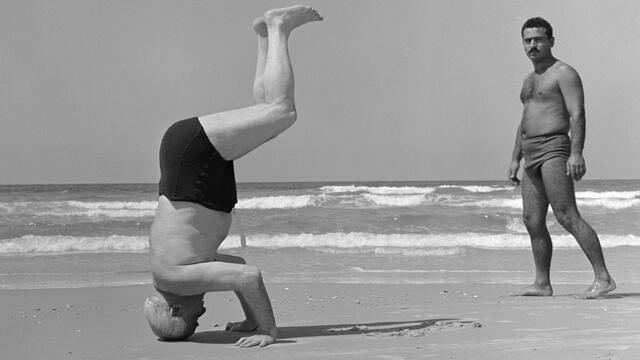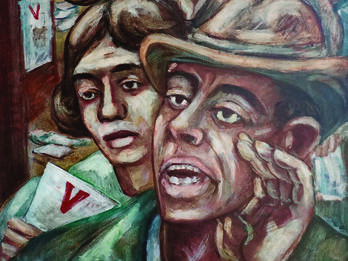Destruction, Rebirth, and Cultural Thought
The years between 1939 and 1973 witnessed unprecedented tragedy and transformation for the Jewish people.

The period from 1939 to 1973 is one of the most tragic and dramatic in Jewish history. It saw the Holocaust, the rise of the Jewish state, the end of Eastern Europe and the Arab world as Jewish centers, the radical transformation of French Jewry from a largely Ashkenazic to a predominantly North African community, and the emergence of an American Jewry that enjoyed unprecedented acceptance, rapid social mobility, and a new leadership role on the world Jewish stage.
Change and Cultural Redefinition
Jews, both in community and as individuals, were forced to redefine themselves in the face of destruction and national rebirth, in a turbulent period marked by the interplay of danger and opportunity. How did they try to replace what was lost? How did the new Jewish state affect them? How did Jews adapt to the challenges of the postwar world: linguistic shifts, the Cold War, unparalleled prosperity, the move away from old immigrant enclaves, and the betrayal of a communist left in which so many Jews had believed?
A process of redefinition and adaptation embraced novel ideas of space and time, gender, and nation. Unprecedented ways of confronting displacement became more prominent. The creative output of this period challenges readers to rethink some mistaken stereotypes: that there was little great literature produced in the ghettos of World War II, that serious interest in the Holocaust began only decades after the war, that Yiddish culture vanished after the war. It also reveals the remarkable and quite rapid transformation of Israeli culture as it struggled to resolve many critical issues, such as mass immigration and the quest for distinctive national forms of music and art. And there are surprises as well. Who, in 1953, for instance, would have predicted the national awakening of Soviet Jewry?
During these years, diverse Jewish communities faced their own individual challenges, but two previously unimagined issues confronted world Jewry and every individual Jew: the meaning and memory of the Holocaust and the safety of the Jewish state. No matter where Jews lived or what their politics were, no matter what languages they spoke, those two key issues, more than any other, demanded some kind of response.
Defining Jewishness
What makes a book or work of art Jewish continues to provoke endless discussion. Is there such a thing as Jewish culture? Some scholars say yes, others no. Ruth R. Wisse has examined the “Jewish canon,” Geoffrey Hartman the “Jewish imagination,” and Barukh Kurzweil and Dov Sadan have made the assumption of an integral Jewish culture the touchstone of their literary criticism. In contrast, the eminent Israeli literary critic Dan Miron has asserted that “one of the inherent and most significant characteristics of Jewish history in modern times is that it produced no one Jewish culture but many variants of possible Jewish cultures or sub-cultures.”1
The disproportionate Jewish presence in certain genres and certain fields—photography, film, and musicals, for instance—demands attention, even in the absence of explicitly Jewish content. Photography attracted many Jews because they could get a start in it with little money and faced fewer social hurdles. But it also accommodated, as few other arts did, the leftist passions of second-generation American Jews who brought with them their love of the camera and their fascination with the rhythms and unconscious choreography of the urban scene. The urban photography of Helen Levitt, Rebecca Lepkoff, and Weegee (Arthur Fellig) captured images of city life that were not in and of themselves “Jewish” but that reflected a particular perspective on the drama of the streets and the sidewalks that many of these children of Yiddish-speaking immigrants intuitively grasped.
No one will deny that an Agnon story written in Hebrew about a Jewish shtetl is “Jewish.” But what about Leonard Bernstein’s West Side Story or Rodgers and Hammerstein’s Oklahoma? Again, neither addresses explicitly Jewish themes. Yet they highlight the Jewish impact on the quintessentially American genre of the Broadway musical and address issues of human dignity and the dangers of group conflict that have had a particular resonance for Jews. In short, their ambiguous Jewishness encompasses a critical aspect of the modern Jewish experience. To try to define what is Jewish is itself very Jewish.
Notes
Dan Miron, “Modern Hebrew Literature: Zionist Perspectives and Israeli Realities,” Prooftexts 4 (1984): 49.


